Waking up in the wee hours of the morning, with the silence of the night still enveloping the world, we embarked on what would become a day of profound revelation and awe-inspiring encounters in Aswan, Egypt.
At 2:30 AM, the alarm clock pierced the quiet of the night, signaling the start of an extraordinary day. Despite the brief respite of sleep, the excitement of exploring Egypt fueled our spirits as we prepared to leave the hotel by 3:00 AM.
Our journey to the airport was smooth, albeit accompanied by the familiar apprehension for the safety of my drone at security checkpoints. Thankfully, all went well, and we were airborne by 6:30 AM. The flight, lasting approximately 1.5 hours, was a blur as I succumbed to exhaustion, sleeping through most of it.

Upon arrival in Aswan, we were greeted by a driver arranged by our travel agency. This marked the beginning of our four-night Nile cruise, with the promise of sumptuous dining experiences onboard until we reached Luxor.
Our guide, who would be our window into the rich history and culture of the regions we were to explore, met us at the hotel ship. He unfolded before us a program that felt like a dream coming to life. Luxor, Karnak, Abu Simbel, names that resonated with echoes from my schoolboy days, where I fantasized about being an intrepid explorer like Indiana Jones, and more recently, reminiscent of my yearly visits to the Louvre Museum.
The Aswan Dam: Conquering the Nile
Our first destination was the Aswan Dam, a monumental feat of engineering that plays a critical role in controlling the Nile’s water levels and generating electricity for the region. The Aswan High Dam, completed in 1970, is a massive dam across the Nile River. It serves a vital role in protecting the region from floods and droughts, ensuring a steady flow of water for irrigation, and generating hydroelectric power.
Upon its completion, the dam emerged as the tallest earthen dam in the world, surpassing the United States’ Chatuge Dam. Towering at an impressive 111 meters high and extending over 3,830 meters in length, the Aswan High Dam is more than a feat of engineering; it i’s a symbol of progress and monumental effort, materialized over a decade of hard work and an investment of about $1 billion.
This colossal rock-fill dam does more than merely dominate the Nile’s landscape. It holds back the world’s longest river, creating the vast Lake Nasser, the world’s third-largest reservoir. But its significance extends far beyond its physical dimensions. Prior to the dam, Egypt’s reliance on the Nile’s natural flooding for irrigation was a precarious dance with nature. The dam changed this dynamic, bringing the Nile’s ebb and flow under human control for the first time in history, turning a natural phenomenon into a predictable, reliable source for nourishing the land.
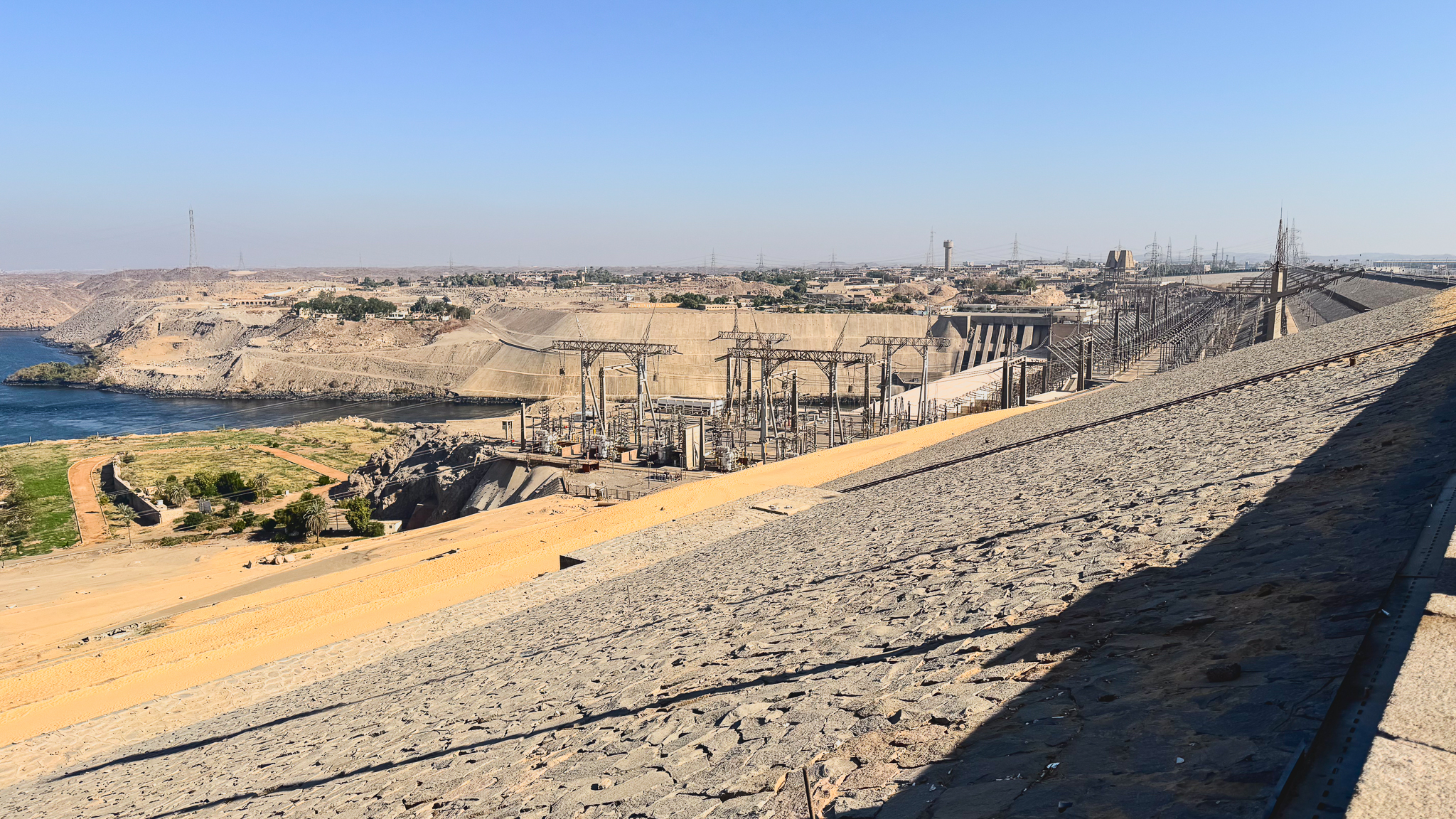
The dam’s impact on Egypt’s economy and agriculture is profound. It transformed arid lands into fertile fields, ensuring a consistent water supply for irrigation and revolutionizing the agricultural landscape. It stands as a symbol of hope and resilience, a testament to what can be achieved when vision, engineering, and perseverance converge.
The Aswan High Dam is more than a structure of concrete and stone; it is a pivotal element in Egypt’s journey towards progress and prosperity. It is a narrative of transforming challenges into opportunities, of harnessing the power of nature to fuel a nation’s aspirations. This dam is not just a part of Egypt’s geography; it’s a vibrant chapter in its history, an emblem of its spirit, and a legacy for the future.
Next, we ventured to the Philae Temple, a jewel of ancient Egyptian architecture. Rejuvenated by a brief nap during the drive, we arrived at our first Egyptian temple.
Once we parked the car, the journey was a feast for the senses – a short walk amidst vendors selling vibrant Nubian handicrafts and the enticing aroma of incense. The Philae Temple, dedicated to the goddess Isis, was a key religious center in ancient Egypt. It stands as a symbol of architectural and cultural ingenuity, showcasing intricate craftsmanship.
After a short boat ride, we entered the temple through a yard lined with columned galleries, an exhilarating first encounter with the ancient Egyptian deities and history.
The Philae Temple: Echoes of Eternity
Nestled on the enchanting island of Philae in the Nile River, the Philae Temple stands as a timeless testament to ancient Egypt’s rich cultural and religious heritage. This architectural marvel, which began its journey around 280 BCE, was primarily dedicated to the revered goddess Isis. It was during the reign of Ptolemy II, a time when the Greco-Roman influence was weaving its way into Egyptian culture, that the construction of this magnificent temple commenced.
The Philae Temple is much more than just the main Temple of Isis. It’s a complex tapestry of history, comprising several smaller temples, shrines, and a nilometer, an ingenious structure used to measure the Nile’s water levels. This was crucial during the annual flood season, reflecting the Egyptians’ advanced understanding of their environment.
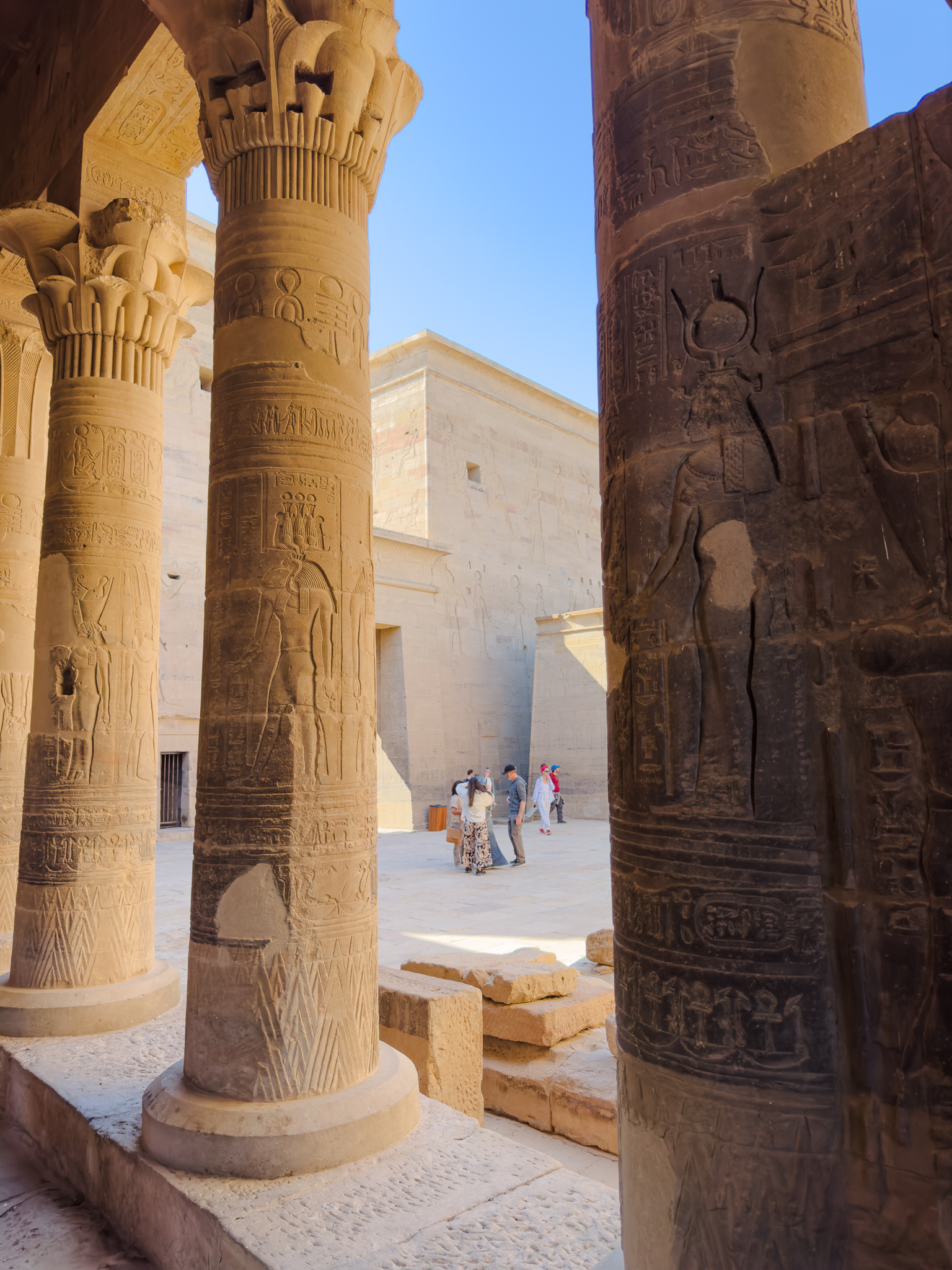
As you wander through the temple complex, you are walking through a corridor of time. Each stone and carving tells a story, not just of the Egyptian era, but of the Greek, Roman, and Byzantine periods. The walls of the Temple of Isis are adorned with scenes straight out of Egyptian mythology: tales of Isis bringing Osiris back to life, the birth of Horus, and the mummification of Osiris. These are not just myths; they are the soulful expressions of a civilization’s beliefs and values.
The spiritual significance of the Philae Temple is profound. Isis was not just a goddess; she was the embodiment of divine motherhood, fertility, magic, and protection. To the ancient Egyptians, and to many who followed, the temple was a place of pilgrimage, a sanctuary where one could seek blessings, protection, and guidance. The fact that the worship of Isis persisted here, even with the advent of Christianity in Egypt, until as late as 550 AD, speaks volumes about the deep-rooted devotion and the temple’s enduring spiritual aura.
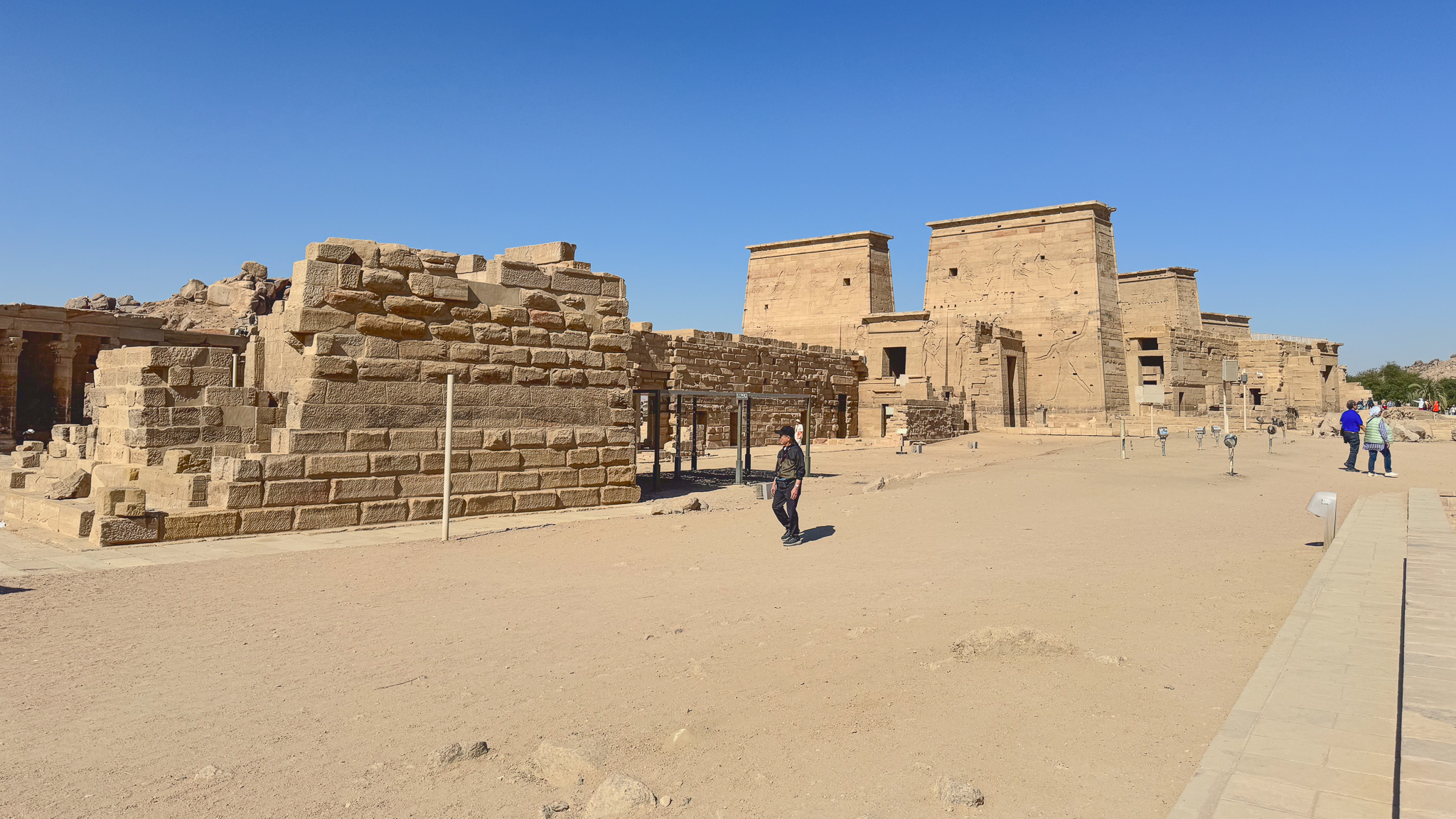
Philae Temple is more than a historical site. It is a symbol of resilience and continuity. It showcases the remarkable ability of human culture to adapt, survive, and flourish through the ages. As you leave its ancient gates, you carry with you not just memories of an architectural wonder, but the spirit of a civilization that has, in its own unique way, shaped our understanding of the world. The Philae Temple, with its rich tapestry of history, mythology, and spirituality, continues to inspire and captivate the hearts of all who visit, reminding us of the enduring legacy of our shared human heritage.
Our final destination for the day was the incomplete obelisk, a quarry where ancient Egyptians began carving what would have been the largest obelisk ever built. This site, while unfinished, offers invaluable insight into the stone-working techniques of the New Kingdom and is believed to have been commissioned by Hatshepsut.
The Unfinished Obelisk of Aswan: A Testament to Ancient Ambition and Craftsmanship
In the heart of Aswan’s ancient stone quarries lies a colossal testament to human ambition and the timeless art of stonemasonry: the Unfinished Obelisk. This awe-inspiring structure, dating back over 3,500 years, is not just a historical artifact; it’s a bridge to the past, connecting us to the extraordinary capabilities and aspirations of an ancient civilization.
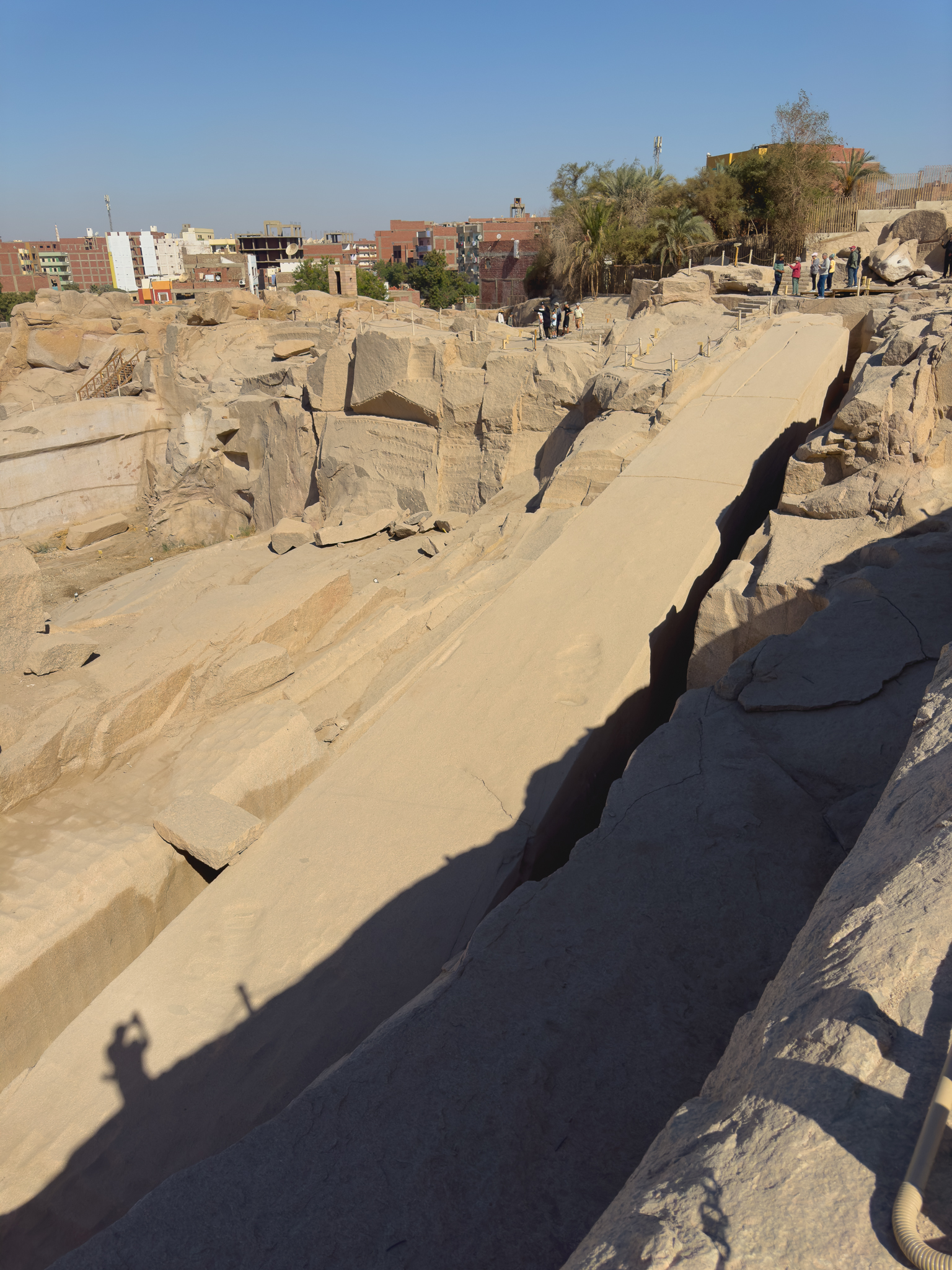
Imagine a monument that, if completed, would have stood at a staggering height of 42 meters and weighed a monumental 1,200 tons. Such was the vision of Queen Hatshepsut in the 15th century BCE. Her reign, marked by prosperity and monumental building projects, was a golden era in ancient Egypt’s history. The obelisk was to be a symbol of her reign’s glory, a towering tribute to the sun god Ra, embodying the might and splendor of the pharaohs.
However, this grand vision was never realized. As the ancient craftsmen carved this colossal structure directly from the bedrock, they encountered an unyielding adversary, nature itself. Cracks appeared in the granite, and the ambitious project had to be abandoned, leaving the obelisk forever tethered to the earth, a sleeping giant in a bed of stone.
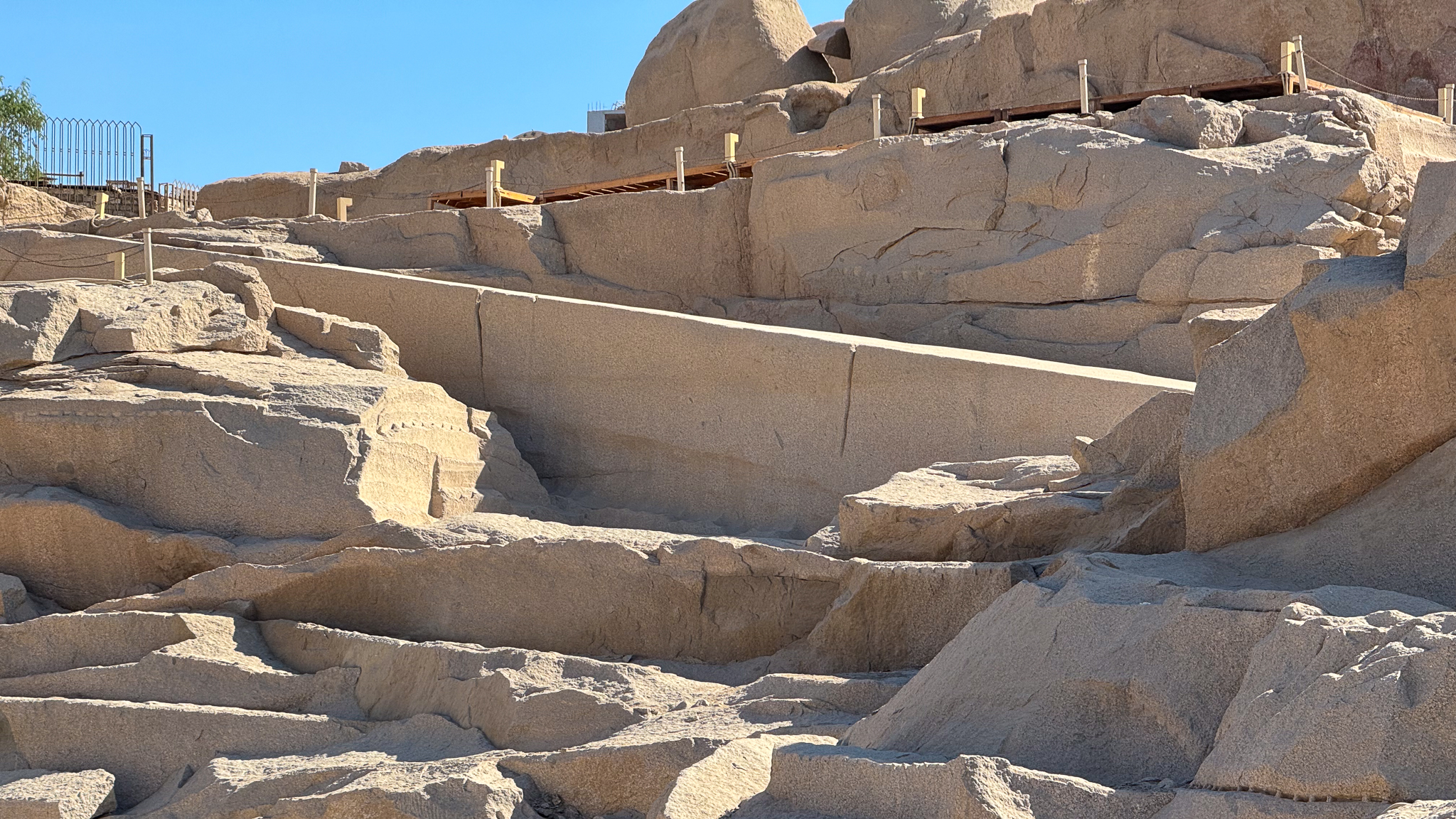
Today, the Unfinished Obelisk offers us more than just a glimpse into ancient Egyptian history. It stands as a poignant reminder of human endeavor, of our relentless pursuit of greatness and the humbling forces of nature that often stand in our way. The site, now part of the “Nubian Monuments from Abu Simbel to Philae” area is a UNESCO World Heritage site, a place where history breathes.
As you walk through this open-air museum, you can’t help but be moved by the sheer scale of this endeavor. The marks of the workers’ tools, still visible on the obelisk’s surface, and the ochre-colored lines marking their progress, tell a story of skill, precision, and determination. They remind us that, in every corner of our world, there are stories of human ingenuity and unfulfilled dreams, waiting to inspire us.
A well deserved rest
After a morning filled with historical exploration, we returned to our hotel ship for lunch and a well-deserved rest. The day culminated in a fascinating dinner conversation with our guide, who shared insights into the Coptic religion, adding depth to my understanding of Egypt’s rich cultural tapestry.
As the day draws to a close, anticipation for tomorrow’s early start builds. We are set to visit a highly renowned temple, the name of which I will reveal in my next post. Today’s experiences: the phenomenal dam, the ancient temple, and the unfinished obelisk, have been an enlightening introduction to Egypt’s rich history and culture. The journey has just begun, and I am already longing to uncover more of Egypt’s timeless treasures.



